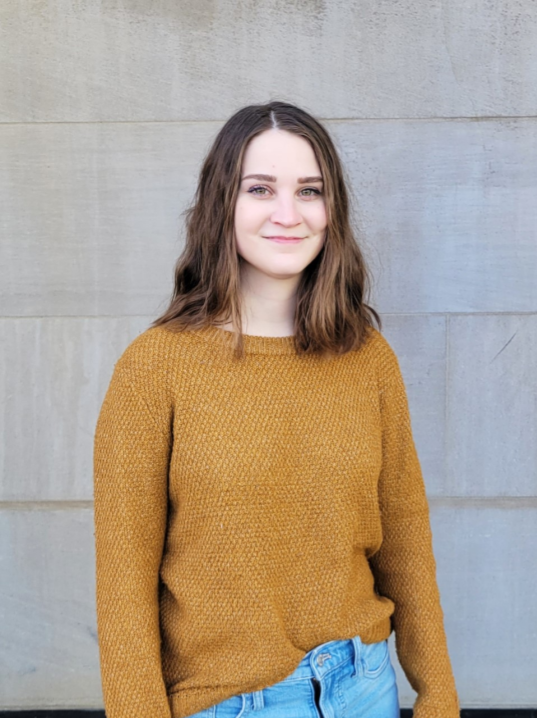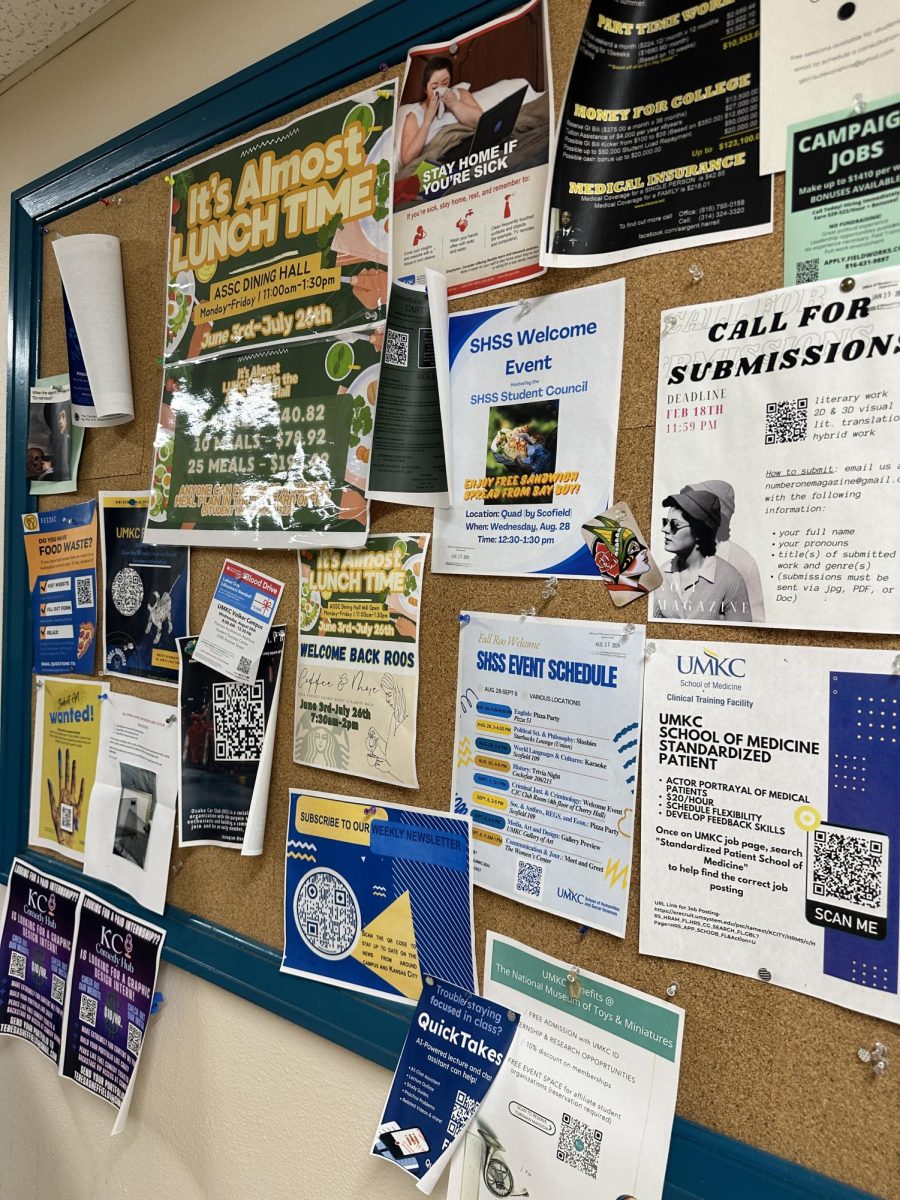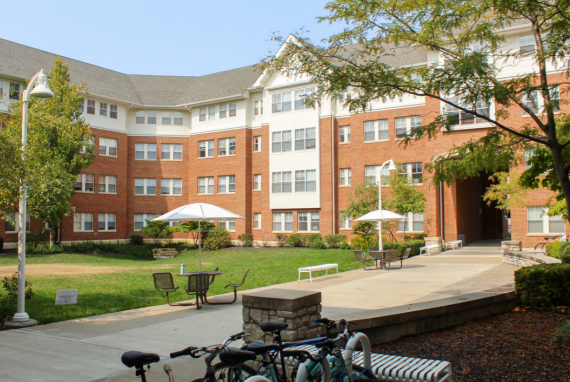“Oh gosh, so this is a journey.”
When asked how she decided to attend UMKC and major in art history, 30-year-old undergraduate Caitlyn Martin’s first reaction was a lighthearted reflection on her past decade of barista jobs and changed majors. Now, her journey has brought Martin to present at a national art history symposium at the end of the week.
Born in Phoenix, Martin and her family moved to Lenexa, Kansas, when she was a child. Upon graduating high school at Shawnee Mission Northwest, Martin attended the University of Kansas to major in photography but only stayed for a year. Shortly thereafter she attended JCCC to pursue graphic design and was there for a few years until she left to work.
After working at three different coffee shops over the course of the next couple of years, Martin eventually decided to go back to school and finish her bachelor’s degree, which is when she settled on pursuing an art history degree at UMKC.
“Art history was something I’d always really had a passion for but never really thought that I could do,” Martin said. “I finally decided to just pull the trigger.”
Ever since childhood, Martin had an interest in arts, and Kansas City’s celebration of local artists encouraged her to pursue art in the metro area. She specifically recalled a time during elementary school when she saw the painted cows, part of the international CowParade exhibit.
The proximity of campus, positive feedback from friends and the university’s connection to nearby museums were some of the many reasons Martin decided to attend UMKC.
UMKC’s Volker campus is just a two-minute drive from both the Nelson-Atkins Museum of Art and the Kemper Museum of Contemporary Art, both hotspots for art appreciation in Kansas City.
As Martin’s cat, Merlin (a pre-COVID pet, she noted), sauntered across her Zoom screen, she recounted the roller coaster experience of going back to school while also getting married in the midst of the pandemic.
“We literally had to move our wedding up like the weekend before lockdown, get married and then I lose my job,” Martin laughed. “I have nothing to do, so I might as well start classes early.”
Martin’s transition into marriage and an undergraduate degree happened at the same time as the world was transitioning into a global lockdown due to COVID.
“I thankfully had gotten all my studio art classes done before coming to UMKC,” Martin said, expressing her relief that she didn’t have to do studio classes over Zoom. “It was weird enough going back to school and then having it all be online.”
In spite of the largely digital instruction, Martin spoke highly of how UMKC’s art department helped channel her interests and amplify future career opportunities.
“I came into this not knowing what I was really going to do,” she said. “I just really felt like my professors poured into me this confidence that ‘you’re capable of doing these things.’”
“Research skills” and “open doors” were phrases that colored Martin’s description of her professors’ impact. The research skills that Martin’s professors helped refine are the same skills that landed her a position to speak at the 2022 Albrecht-Kemper Museum of Art (AKMA) and Missouri Western State University (MWSU) Undergraduate Art History Symposium.
This annual symposium, now entering its sixth year, features 11 students from eight different states. Following a national call for research proposals, a panel of art historians selected these students based on “original research and academic rigor,” according to the symposium’s website.
“I am excited and honored and also absolutely terrified,” Martin laughed. “I got the email that I was accepted, and I started hysterically laughing and crying on the floor.”
Martin will be presenting “The Power of Storytelling in Art: ‘20 Odd’” by Sara Sonié Joi Thompson-Ruffin.
“20 Odd” is a 12-foot-long quilt that depicts the first 20 men to leave the continent of Africa for the Americas in the slave trade. The work is part of the Nelson-Atkins Museum’s permanent collection.
“I really love how everything [Thompson-Ruffin] does seems so purposeful,” Martin said. “It’s not just ‘we’re doing this to be aesthetically pleasing,’ it’s to make statements.”
As an example, Martin mentioned how Thompson-Ruffin used indigo fabric to frame the quilt, as indigo has a very spiritual aspect in Western Africa. She added that slaves were often in charge of making quilts in the American south, and Thompson-Ruffin herself is a descendant of a slave.
“This work, to me, really felt like a family history for her,” Martin reflected.
Martin’s research on the piece occupied most of her time last semester — Martin estimated that towards the end of the semester, she was spending at least 15 hours a week conducting and compiling her research. Her days consisted of long periods at her desk punctuated by breaks where she would go on a walk, read, or play some of her favorite RPG video games like “Uncharted” and “Witcher 3.”
Her 15-hours-of-research weeks paid off, though, and now Martin will be presenting at the symposium, which will take place this Saturday, April 9, from 9 a.m. to 5 p.m. at the Albrecht-Kemper Museum in St. Joseph, MO as well as online.
“Caitlyn 10 years ago would never have even applied for this; she would’ve been too scared,” Martin said. “It really pays to just follow your own path and let life lead you and be really flexible with what happens. Roll with the punches, have endurance and keep moving.”
ary7n@umsystem.edu








